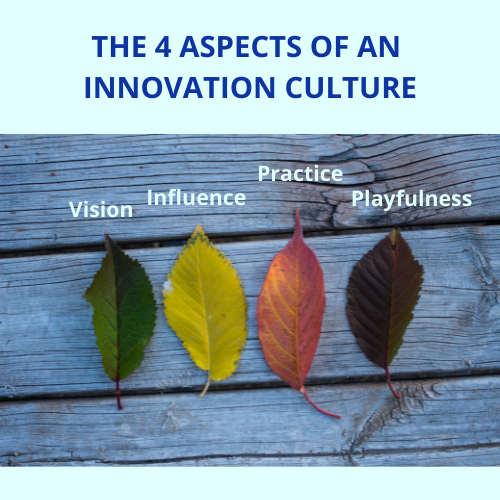
When we talk about creativity and innovation, it is fair to remember that you need to foster the right conditions for it to blossom. We are focusing here mostly on the leadership layer, culture and mindset.
Regularly organizations have to find new ways, define new solutions and build new products. Senior leadership asks for more innovation but nobody seems to listen. Instead, they should try to create the four conditions for fostering innovation.
Vision:
“If you want people to think out of the box you need to define the box!” (Sarah Kelley)
Words hide different meaning. The illusion of agreement at senior level is an endless source of confusion across the organization. Probe understanding and check the ambition is consistent with the strategy. In other words, if you send the organization running, ensure at least it goes in the right direction. The Leadership team needs to craft a meaningful vision. It should end up with a concise picture, easy to understand and to communicate. The role of the Leadership team is to provide a clear direction while not being too prescriptive.
Influence:
Creativity & Innovation is not fostered in a Command & Control culture. Why? Because people get used being told what to do and this inhibits initiative. What can you do to support the teams in their innovation effort? Budget, time, rewards and recognition.
Independence:
To do whatever needs to be done to achieve the objectives without having to ask permission and approvals all the time!
Practice:
You need to move away from the assumption that only a few gifted people can be creative. All humans have the potential for creativity. Creativity is a muscle; what are you doing to train it? Art practice, brainstorming, taking risks, developing expertise, etc. are some examples. Practice + Right Mindset = Perfection
Playfulness:
The 5 characteristics of playful learning — according to the LEGO Foundation — are:
- Iterative — The capacity to fail, start again and learn a great deal doing so.
- Socially Interactive — The process of sharing perspectives and empathizing directly with stakeholders.
- Meaningful — The team being able to relate to the problem in the larger context of the company.
- Actively Engaging — People learn best when they play an active role in solving a problem.
- Joyful — enjoying a task for its own sake.
You can’t foster a culture of innovation without them!